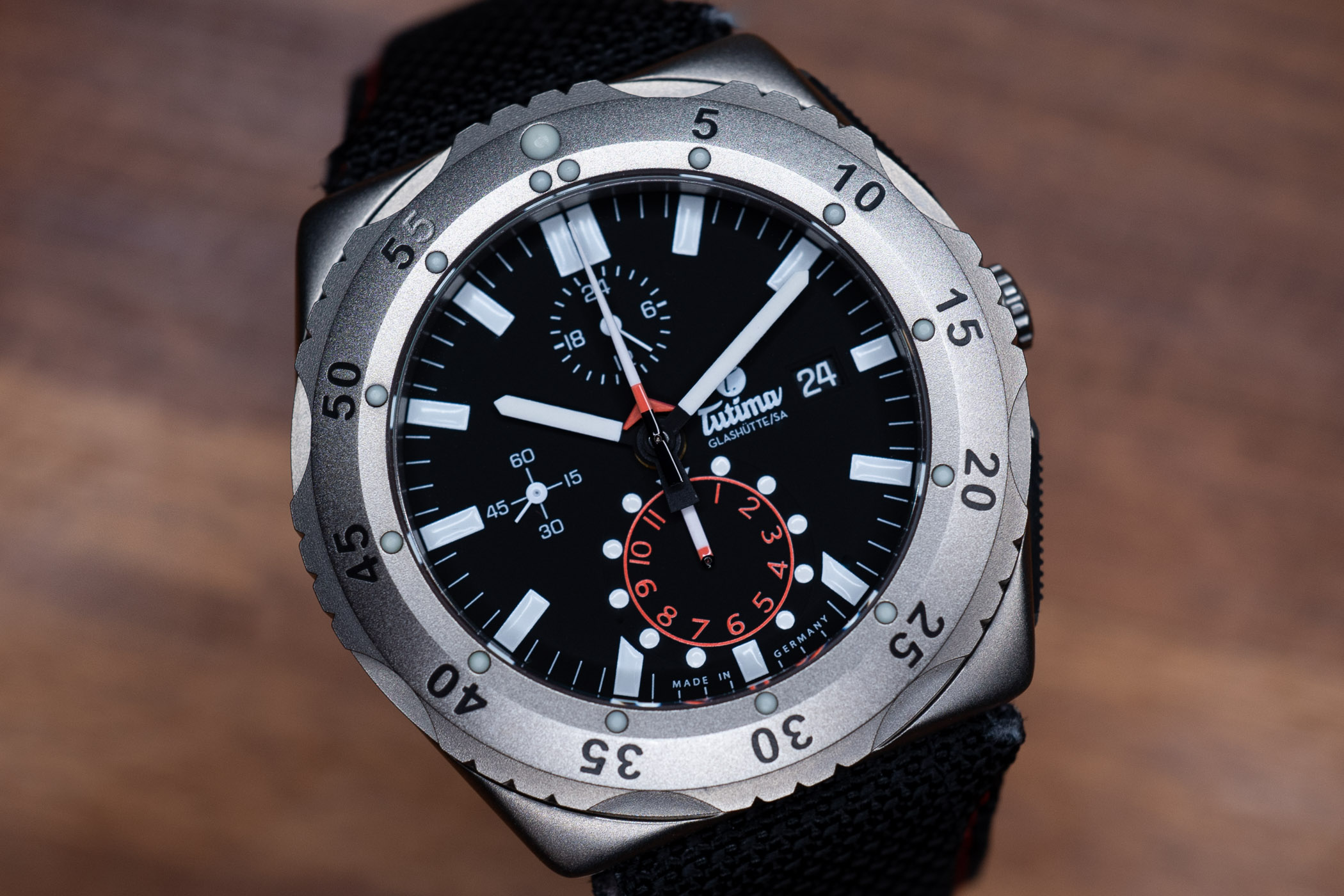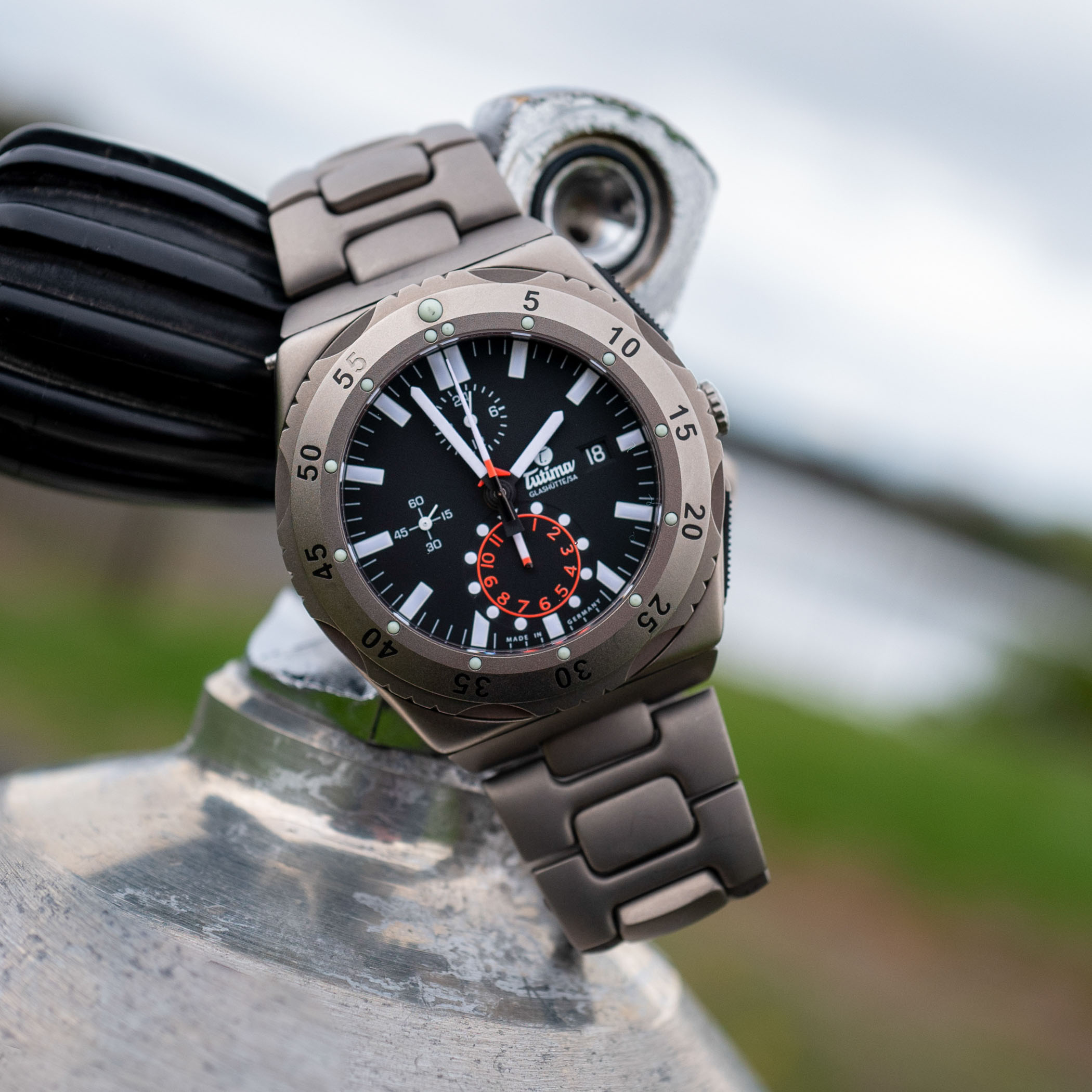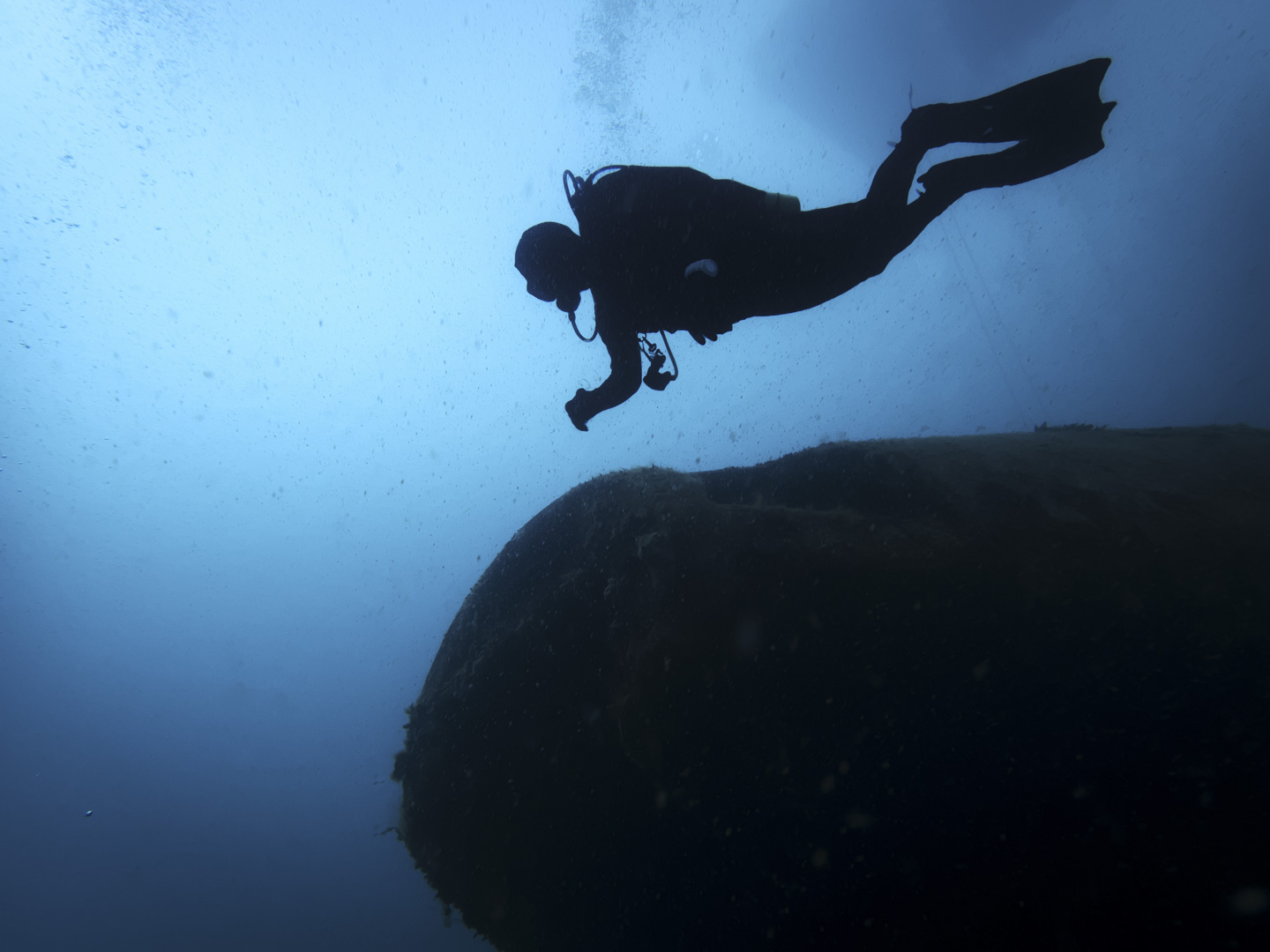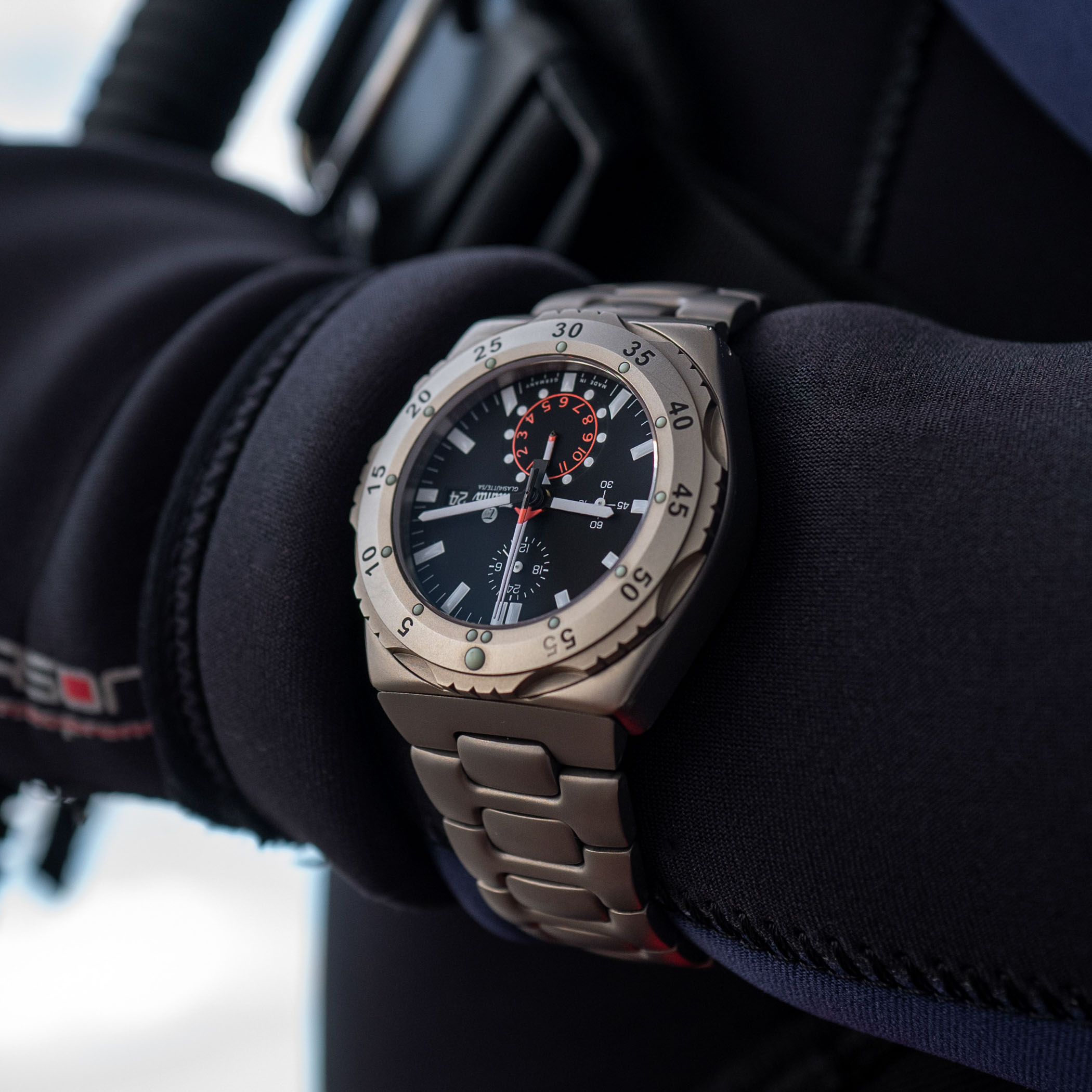Diving with the Tutima M2 Pioneer Chronograph 6451
Putting the Tutima M2 Pioneer to the test in its natural element.
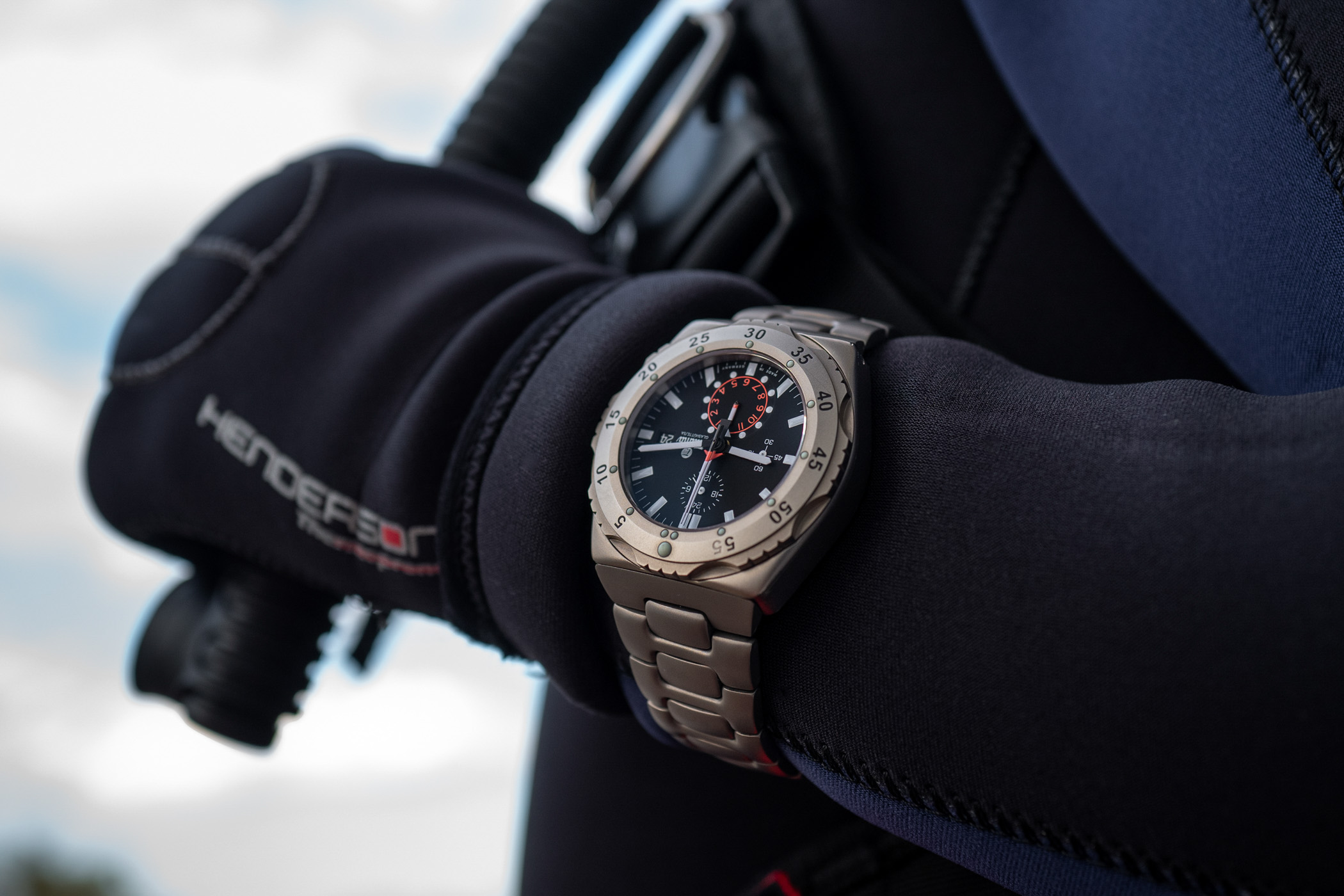
We don’t get many opportunities to see the sheer amount of dive watches being released these days in their natural element. Out in the deep blue yonder, beneath the waves, doing the work they were intended to do: keeping SCUBA divers alive with accurate, reliable timing and bulletproof water-resistance. Thanks to a loan from the folks at Tutima, we are going to do exactly that. We are going to put the Tutima M2 Pioneer 6451 to the test. And yes, we’re going to see how this ultra-robust chronograph performs underwater… and on land too.
Tutima is a bit of an under-the-radar brand here in the US (Editor’s note: Derek, the author, lives and works in the US). It has a long history in Europe, dating back to 1927 and renowned for its production of many excellent military and chronograph watches. It wasn’t brought to US shores until 1996, which probably partially explains the low profile it has kept here ever since. For me, it was a brand that existed only in the pages of print and online magazines, keeping on the fringes of my horological consciousness.
The basics of the Tutima M2 Pioneer
The watch I had the pleasure to take diving is the Tutima M2 Pioneer 6451. Originally released way back in 2014, this 46.5mm diameter and 16mm thick behemoth is the most techy and toolish watch in the stellar M2 family. It is the do-it-all tool watch of the gang, combining the dive elements of the Seven Seas, like the 60-minute rotating bezel, with the pilot aspects of the recently released Coastline chronograph, such as the integrated pushers to avoid snags in cramped cockpits. We’ve all been there.
The chunky case is made entirely of pearl-blasted titanium, giving it a rugged, unpolished look and drastic reduction in weight for a watch of its size. The matte black dial features a date display, a 24-hour sub-dial, a running seconds sub-dial, a 12-hour totalizer and a central 60-min totalizer for the chronograph. That is a lot of functionality packed onto a dial that still manages to look decidedly uncluttered and legible – quite a feat. Functions are nicely delineated by colour: things related to the chronograph are accented in red, such as the centre second and minute hands and 12-hour totalizer, and all other timekeeping functions utilize white text. The legibility is increased even further by the anti-reflective treatment given to the sapphire crystal, one of the best I have ever seen in person. Powering things under the hood is the Tutima Caliber 521, which is a highly modified Valjoux 7750 automatic chronograph movement with a 48-hour power reserve. The modifications to the movement make it closely resemble the long-since discontinued Lemania 5100, giving it that familiar sub-dial layout and central chronograph minutes hand.
The Tutima M2 Pioneer Chronograph 6451 comes on a matching pearl-blasted titanium bracelet, which is lightweight and very comfortable. It also comes with a lovely fabric and Kevlar strap with a deployant clasp, a very nice alternative. My only real complaint about the watch is where the integrated bracelet meets the case. It is attached with a proprietary pin and collar system that you have to remove with a tool and hammer, thus highly limiting your strap options. You could possibly squeeze a NATO in there, but it would be a tight fit. Luckily the two supplied options are very nice and cover most of your stylistic bases.
On Land
Let’s not beat around the bush; this is not a small watch. And unfortunately, even with as many links removed as possible, the bracelet was just too big for my diminutive 16cm wrist. As a daily wearer, it is probably better suited to your Sylvester Stallone type of fellow. That being said, wearing it on the included canvas/Kevlar strap, it wears much smaller than its near-47mm measurement would have you believe. The combination of basically no lugs and the reduced weight of a full titanium case makes it feel barely larger than an average 42mm diver. It sprints right up to the edge of “too big”, then backs off, just a little. If there were a stereotypical elegant action hero, like James Bond mixed with Rambo, this would be his watch.
Just last year, Tolga Taskin broke a freediving record in Austria wearing this very watch. Unfortunately, I wasn’t able to do anything that groundbreaking or extreme, but I did put it through its paces during a day of diving in some fairly frigid 4°C waters, so let’s jump in, pardon the pun.
How it performs at Sea
The first thing that struck me about the M2 Pioneer is how much it feels like a piece of gear and not a luxury timepiece. In a good way. While suiting up to dive, it doesn’t need to be treated any more gently than the rugged digital dive computer or the series of clasps, buckles and zippers involved when preparing to get in the water. It embodies the essence of a tool watch, more so than most other dive watches I have taken in the water.
The 60-minute dive bezel is bi-directional, which is a bit of a no-no on a dive watch, as accidentally turning it clockwise can lead you to believe that you have been underwater for less time than you actually have. This is problematic underwater and can lead you to stay underwater longer and eventually run out of air. Luckily, the bezel action is quite tight here, and the grip is designed with cut-out grippy sections alternating with smooth recesses, which make accidental bezel turns seem highly unlikely. Still, I wouldn’t recommend using this as your sole means of underwater timing, just in case. The M2 Pioneer is not technically a “dive watch” so it gets a pass for not having a true, uni-directional dive bezel.
Let’s be honest, in these days of literal dive computers that make scuba diving a simpler and safer endeavour, determining the usefulness of a mechanical dive watch is largely an intellectual, not practical, pursuit. Regardless of that fact, I never dive without one on the wrist. There is just something pure and romantic about it. Harkening back to the days of Cousteau, when guys were pushing the limits of this new sport wearing nothing but a tank of air, some cutoff jeans and a steel watch with a timing bezel. I am definitely not a part of that pioneering vanguard, but when I glance down at the simplicity of a well-built dive watch, for just one second, I can pretend to be.
The Tutima M2 Pioneer does everything you would want it to do underwater, and it does it very well. I always start a dive chronograph before going underwater as a backup, and the large rubberized chronograph pushers were a cinch to operate, even in 5mm thick gloves. The same goes for the aforementioned bezel, very well designed and easy to turn while suited up.
Once submerged, the anti-reflective coating on the sapphire crystal and that velvet matte dial become the stars of the show. There was a pleasantly surprising, almost complete lack of reflection underwater, pretty uncommon in my experience with dive watches. Generally, looking at a watch underwater from any angle other than straight on offers nothing but glare and reflection in return. That is not the case here. The combination of the flat crystal and whatever magical serum the coating is made ensured perfectly clarity from almost all vantage points. Lume is another high point here. The hands and indices are fully lumed, including small pips every hour of the 12-hour chronograph totalizer. There are also lume pips integrated into the titanium bezel at every 5-minute interval, ensuring that all the information you could want is accessible, even in the darkest conditions. That, coupled with the legibility and utility of the dial, make it a true joy as an underwater companion. And the lightweight nature of the all-titanium build means that you don’t even know it’s there until you need it to be, like any perfectly designed tool. A quick flick of the eyes towards the highly visible dial offers all the information you need with zero fuss and doesn’t take away from time better spent looking at fish, turtles, or submerged aeroplanes, in this case.
Conclusion
This was my first hands-on experience with Tutima, in any capacity, and it left me extremely impressed. As a backup precision dive instrument – which is all that mechanical watches truly are to divers these days – the M2 Pioneer does everything asked of it flawlessly, and it does it with style. This experience will surely put Tutima much more on my radar for years to come. The build quality is fantastic, and the utilitarian German design is perfect, everything in its right place. Dieter Rams would be proud.
More info at Tutima.com.



